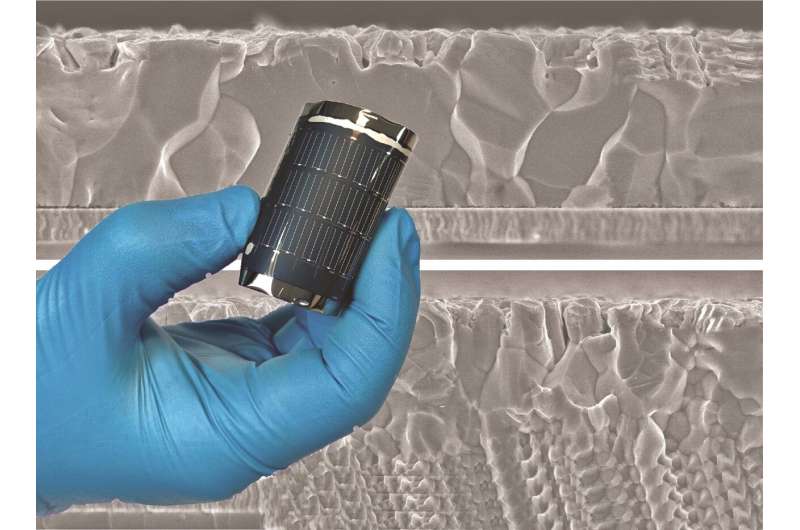Flexible solar cells with record efficiency of 22.2%

Empa researchers have, once again, improved the efficiency of CIGS flexible solar cells. Independently certified measurements revealed a power conversion efficiency of 22.2% to convert light into electricity, an improvement from their previous record value of 21.4%.
To compare, the best efficiency of a rigid crystalline silicon solar cell is 26.7%. The team of Romain Carron, group leader in Empa’s Laboratory for Thin Films and Photovoltaics headed by Ayodhya N. Tiwari, presented their newest results at the 8th World Conference on Photovoltaic Energy Conversion (WCPEC-8) on 26 September 2022 in Milano, Italy.
These flexible solar cells are processed on a polymer film with the Cu(In,Ga)Se2 semiconductor layer that absorbs the light deposited by a low-temperature co-evaporation method. Empa scientist Shiro Nishiwaki modified the composition of the layer to improve the device performance and output voltage.
“Two approaches [were] explored to alloy the crystal delivered similar improvements in device performance,” said Romain Carron. Therefore, the findings can be transferred at industrial scale following different implementations, with equivalent outcomes. The solar cell efficiency of 22.2% was independently measured at the Fraunhofer Institute for Solar Energy Systems ISE in Freiburg, Germany.
Setting new records for 23 years
Ayodhya Tiwari and his team are conducting research on flexible thin film solar cells for more than 23 years. With their profound knowledge of the technology and the fundamental physical processes, they have achieved several efficiency records throughout the years.
Their “record series” started with 12.8% in 1999, moved to 14.1% (2005), 17.6% (2010), 18.7% (2011), 20.4% (2013), with more recent progress to 20.8% in 2019 and 21.4% in 2021. In the regime of high efficiency limits, every small increment requires careful investigation of the factors that limit the performance, and requires innovative approach to overcome the challenge. The current enhancement in efficiency is attributed to alloying the light absorbing semiconductor layer to improve the electronic properties.
Flexible and lightweight solar modules with this technology are especially suited for applications on roofs and facades of buildings, greenhouses, vehicles, airships and portable electronics. Empa collaborates with Swiss company Flisom for roll-to-roll manufacturing of lightweight flexible solar modules for such applications. The research was supported by the Swiss Federal Office of Energy (SFOE).
Efficiency of flexible CIGS solar cells measured at record 21.4%
Citation:
Flexible solar cells with record efficiency of 22.2% (2022, October 11)
retrieved 11 October 2022
from https://techxplore.com/news/2022-10-flexible-solar-cells-efficiency.html
This document is subject to copyright. Apart from any fair dealing for the purpose of private study or research, no
part may be reproduced without the written permission. The content is provided for information purposes only.
For all the latest Technology News Click Here
For the latest news and updates, follow us on Google News.
